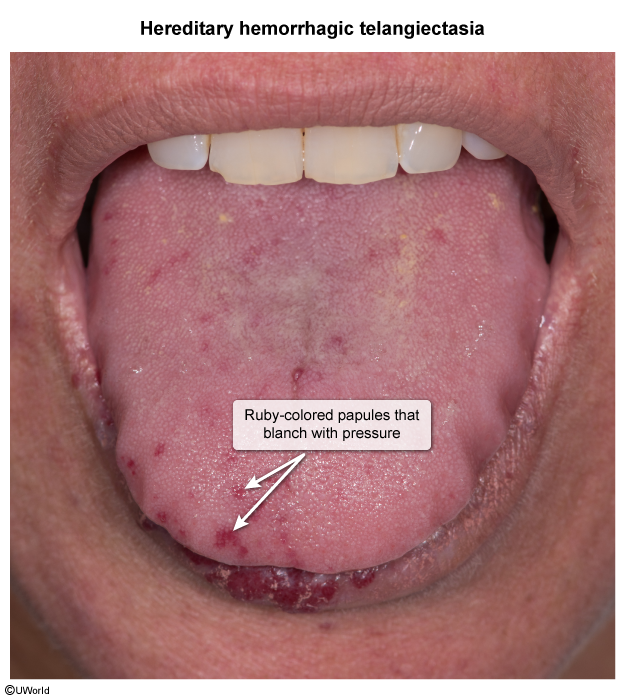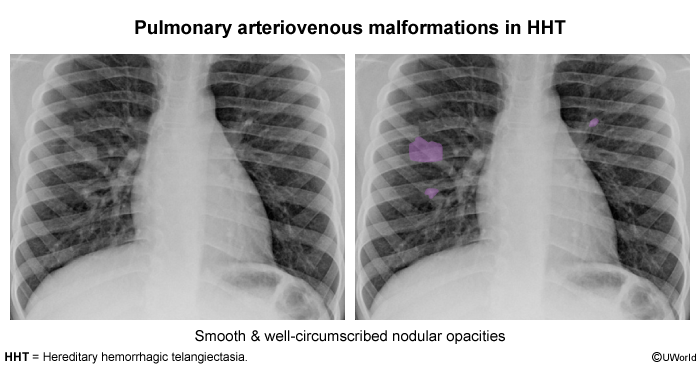Hereditary Hemorrhagic Telangiectasia (Osler-Weber-Rendu)
Article Sections
Introduction
Hereditary hemorrhagic telangiectasia (HHT) (aka Osler-Weber-Rendu syndrome) is a genetic disorder involving formation of mucocutaneous telangiectasias and visceral organ arteriovenous malformations (AVMs). These vascular anomalies lead to recurrent bleeding (eg, epistaxis) and various systemic complications (eg, high-output heart failure).
Pathophysiology
HHT is caused by loss-of-function mutations in genes involved in angiogenesis and vascular integrity. The 3 key genes are endoglin (ENG), activin receptor-like kinase-1 (ACVRL1), and SMAD4. They are major components of the transforming growth factor beta (TGF-β) signaling pathway, which is important not only for fibrogenesis, but also vessel structure and development. HHT displays autosomal dominant inheritance with variable expressivity (ie, wide range of symptoms despite the same genotype). Some cases occur sporadically (ie, germline mutation).
Continue Learning with UWorld
Get the full Hereditary Hemorrhagic Telangiectasia (Osler-Weber-Rendu) article plus rich visuals, real-world cases, and in-depth insights from medical experts, all available through the UWorld Medical Library.
Images

